Five
GROWTH OF A CITY
THE FIRST 25 YEARS
With the incorporation election results certified by Los Angeles County on March 21, 1989, the newly elected Diamond Bar City Council dived into the thick of creating the new city.
In the weeks leading up to its official installation ceremony, the group met several times to organize for the establishment of the soon-to-be seat of local government—the tasks included securing office space for city hall, hiring key city personnel, meeting with the county to ensure continuity of services, and drafting resolutions and ordinances.
The official incorporation of the city occurred on Tuesday, April 18, 1989, during the city council’s first official meeting, which was held in the Chaparral Intermediate School auditorium and attended by more than 300 people.
The meeting opened with an installation ceremony that included the administration of oaths to council members, the election of mayor Phyllis Papen, mayor pro tem Paul Horcher, and special presentations and well-wishes from several state, county, and local officials.
The city council also had the complex yet exciting task of formulating the city’s first official general plan, required by state law to be completed within 30 months after incorporation, to serve as a “blueprint” for future land-use planning.
To help undertake this city-defining task, the council appointed 30 residents to serve on an ad hoc advisory committee tasked with creating a brand-new plan that would align with the city’s vision for maintenance and growth.
The final Diamond Bar general plan was adopted by the city council on July 25, 1995, marking an important milestone for the community—tangible proof of the local control they had sought with the incorporation of the city six years earlier.
Looking forward to the next 25 years and beyond, the current city council plans to continue the tradition of protecting the city’s firm financial foundation through prudent revenue and appropriation policies and decisions started by the founding council and maintained by the five generations of councils that have followed.
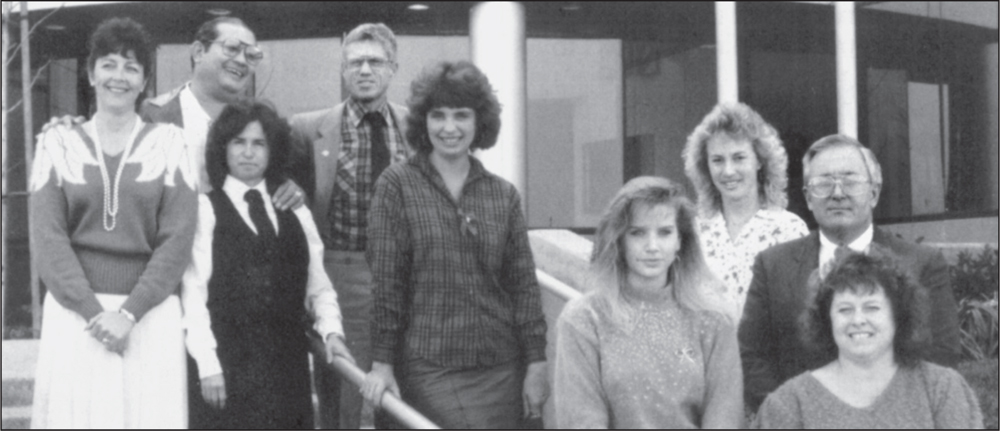
After the March 7, 1989, election and before its first meeting on April 18, 1989, the city council–elect took on the task of establishing the first city manager’s office. Since the council had not yet been sworn in and therefore was not an official body, the first city employees—the city manager, an attorney, and a secretary—were brought in by the council-elect on an interim basis and without a formal agreement. Pictured on the front steps of the first city hall offices in the Gateway Corporate Center are, from left to right, city clerk Lynda Burgess, building inspector Al Flores, deputy city clerk Tommye Cribbins, Matthew Fournatt, secretary to the city manager Dawne Calleros, junior clerk typist Christine Haraskin, financial management assistant Joann Saul, city manager Robert Van Nort, and senior accountant Linda Magnuson.
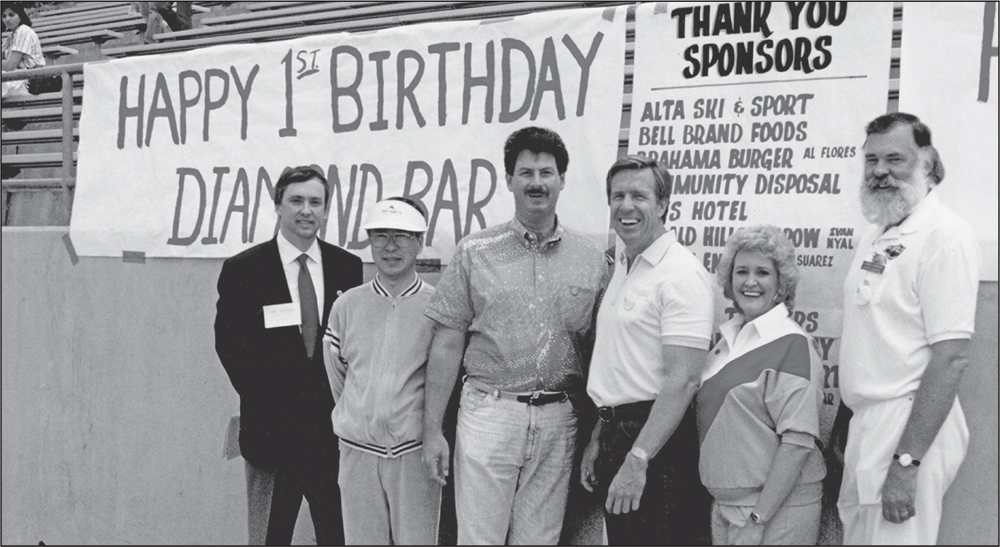
The first year of cityhood was trying on the new Diamond Bar City Council because in addition to learning the operation of the city and their roles as policy makers, they faced a challenges during the first year that included responding to a lawsuit by the County of San Bernardino, undertaking efforts to widen the Pathfinder Bridge over the Route 57 freeway without any funding, and the withholding of property tax revenue by Los Angeles County due to a legal interpretation regarding the city’s incorporation date. The city held its first birthday celebration on April 17, 1990, at Sycamore Canyon Park. Pictured here are, from left to right, councilman Paul Horcher, future councilman Jay Kim, councilman Gary Werner, councilman Gary Miller, mayor Phyllis Papen, and councilman John Forbing.
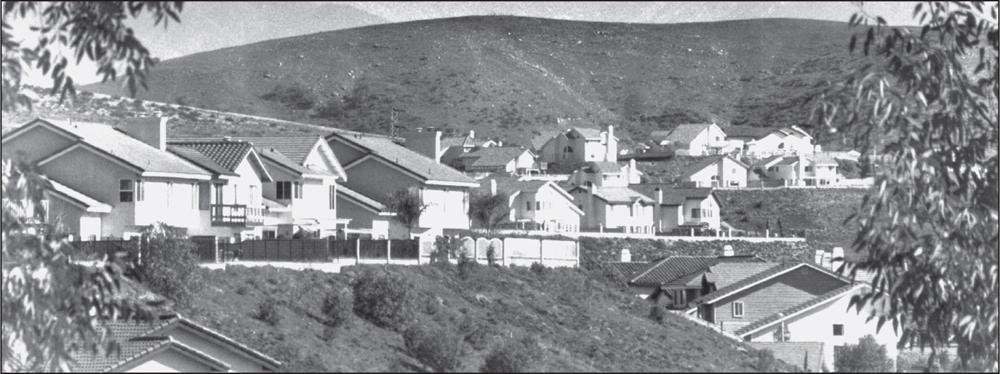
Local control, the primary motivation for incorporation, added to the significance of Diamond Bar’s first general plan as an incorporated city. The initial draft of the “blueprint for development” was finished in 1990 with the assistance of a 30-member, community-based advisory committee. The plan generated a rift among residents who advocated for more restrictive development and those who saw development as critical to the long-term sustainability of the city. Six years, three drafts, and two advisory committees later, the Diamond Bar City Council adopted the city’s first general plan on July 25, 1995. Almost 20 years later, in 2014, the city began the process of executing the first comprehensive update to its general plan to guide new development into the next two decades. This photograph shows Diamond Bar Homes in the 1990s.
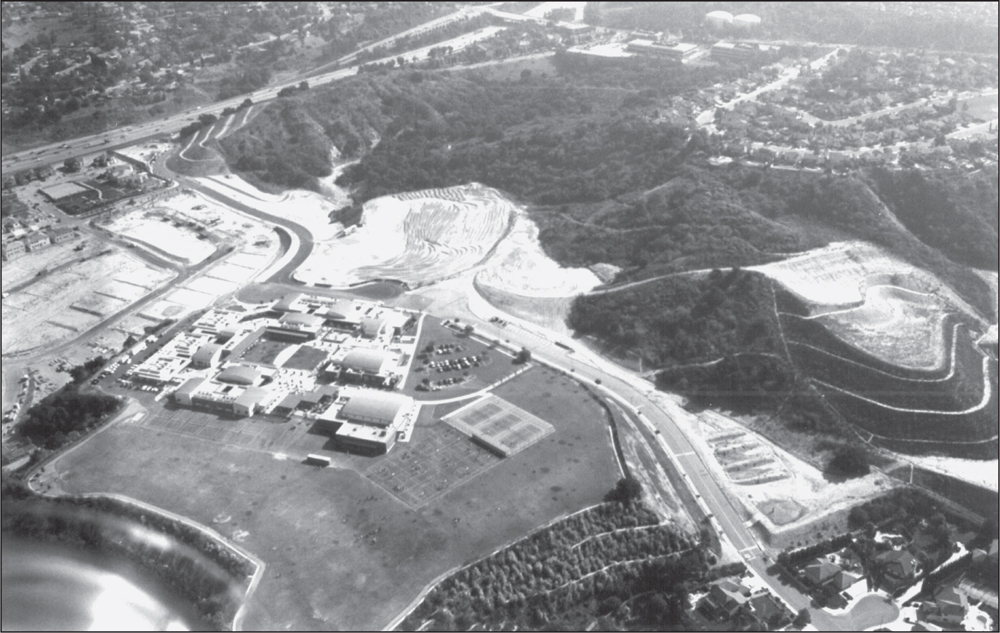
In the spring of 1993, the city pursued the opportunity to master-plan a large area of undeveloped land. This was of major significance because prior to incorporation, decisions regarding land use were made by Los Angeles County. The South Pointe Master Plan guided the development of 170 acres in the South Point Middle School/Sandstone Canyon area (west of Brea Canyon Cut Off and north of Pathfinder Road). Implementation of this plan replaced South Point Middle School’s temporary structures with permanent buildings on a 30-acre area. The remaining 140 acres contained 90 acres of housing; 30 acres of commercial, retail and office space; and 20 acres of parkland. This aerial photograph is of the South Pointe development.
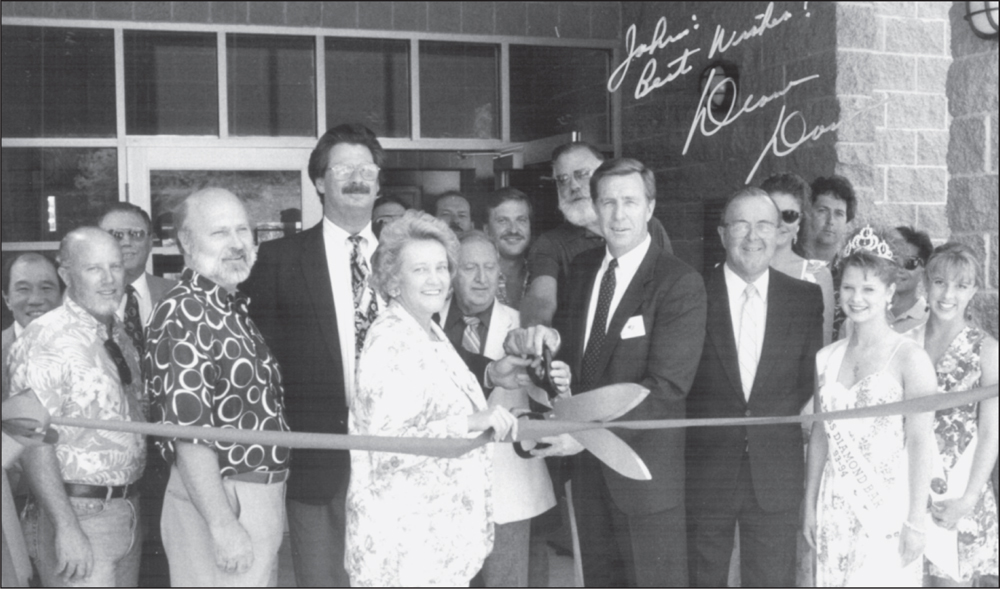
One of the first major capital improvement projects the city undertook as an incorporated entity was the reconstruction of the Heritage Park Community Center. The project, aimed at creating a facility that could accommodate a wider range of recreational uses, nearly doubled the size of the previous building from 2,000 to 3,700 square feet of space. A special event was held to mark the grand reopening of the center on September 11, 1993. Among those pictured at the event are councilman Gary Werner, mayor Phyllis Papen, councilman John Forbing, councilman Gary Miller, and members of the Miss Diamond Bar Princess court.
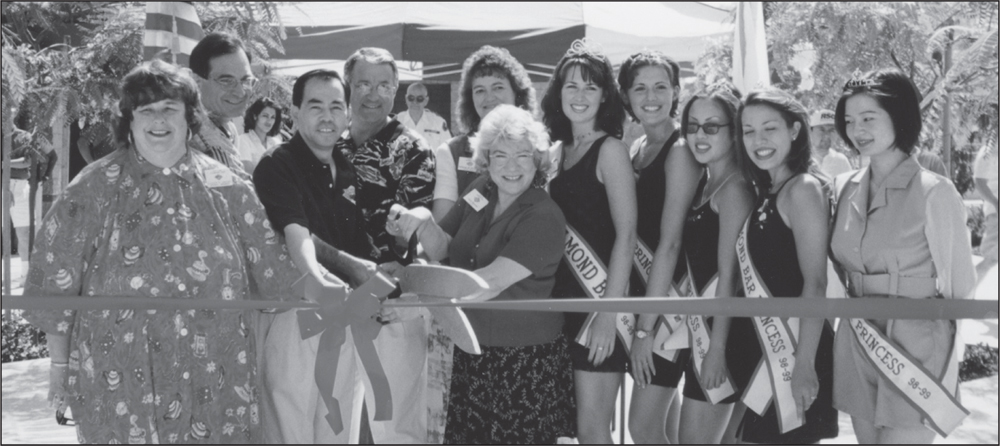
Pantera Park was the first—and, to date, the only—community park fully planned and constructed by the city following incorporation. Based on citizen input obtained through four community meetings, the 23-acre park site was outfitted with two softball fields, three basketball courts, a children’s play area, a meeting room, concession facilities, and picnic areas. Elected officials and community representatives came to the grand opening celebration in July 1998, including, from left to right, former councilwoman Eileen Ansari, Bob Huff (now a state senator), councilman Wen Chang, supervisor Don Knabe, councilwoman Debbie O’Connor, councilwoman Carol Herrera, and members of the Miss Diamond Bar court. In November 2012, Pantera Park was expanded to include the city’s first dog park.
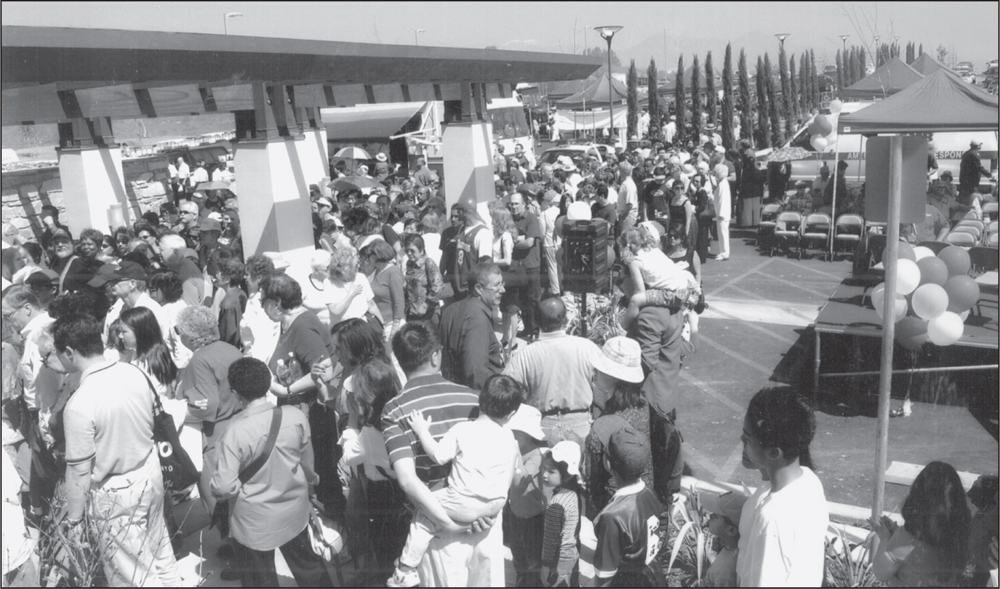
The path that led to the construction of the Diamond Bar Center began in 1998 with the formation of a 35-member community task force appointed by the Diamond Bar City Council. After 18 months of considering various options and gathering public input, the group recommended construction of a community/senior center at Summitridge Park. Construction of the Diamond Bar Center began in July 2002 and took nearly two years to complete. The 22,500-square-foot facility opened to high acclaim on Saturday, March 20, 2004. Pictured below ceremoniously cutting the ribbon on grand opening day are, from left to right, councilman Wen Chang, councilwoman Deborah O’Connor, congressman Gary Miller, councilman Bob Zirbes, councilman Bob Huff, and councilwoman Carol Herrera.
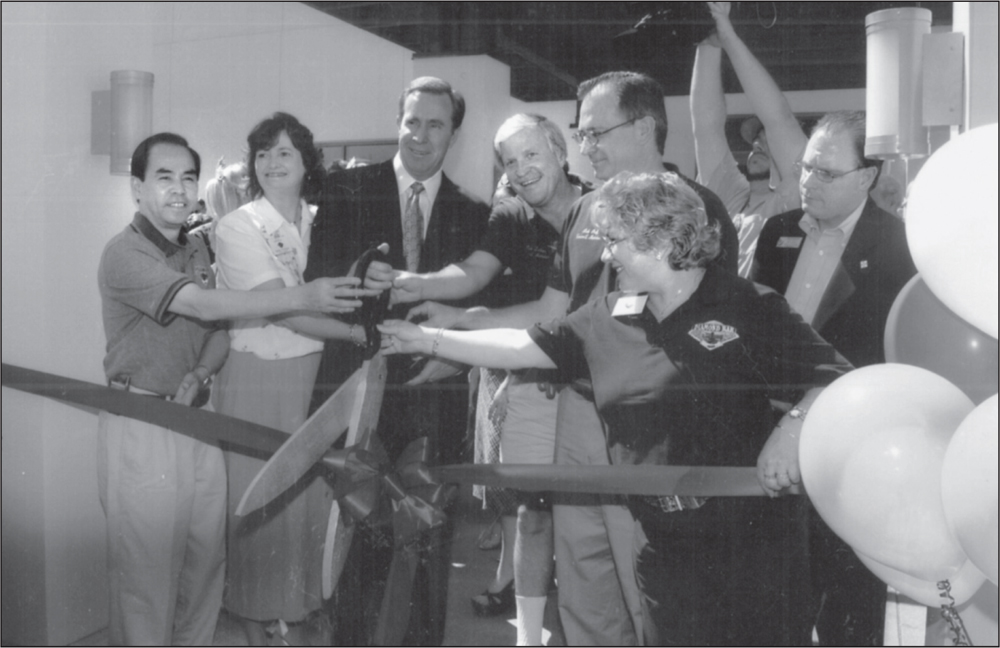

After more than 21 years of renting, the city council took advantage of the availability of a two-story building within the Gateway Corporate Center and secured a permanent address for both city hall and an expanded library. The building was purchased in 2010 with $10 million of the city’s general fund reserves. On January 3, 2012, Diamond Bar City Hall began serving the public from its new location on the second level of this building. The new library opened on July 30, 2012. The library’s relocation from Grand Avenue doubled the floor space and increased the number of parking slots from 35 to 300. The new library was dedicated on Saturday, July 28, 2012, with special recognition given to Los Angeles County Fourth District Supervisor Don Knabe for his allocation of $5 million for the construction of the library and the Diamond Bar Friends of the Library organization for its donation of $80,000 for the construction of a reading garden. Pictured below at the grand opening are, from left to right, Laura Zucker, executive director of the Los Angeles County Arts Commission; councilman Jack Tanaka; state senator Bob Huff; congressman Ed Royce; councilwoman Carol Herrera; councilwoman Ling-Ling Chang; Knabe; congressman Gary Miller; Diamond Bar Friends of the Library president Rosette Clippinger; county librarian Margaret Donnellan-Todd; and Diamond Bar Friends of the Library member Ruth Low.
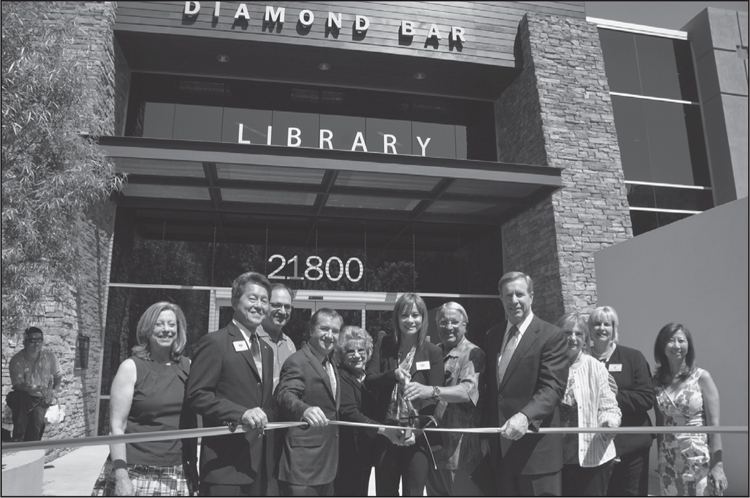
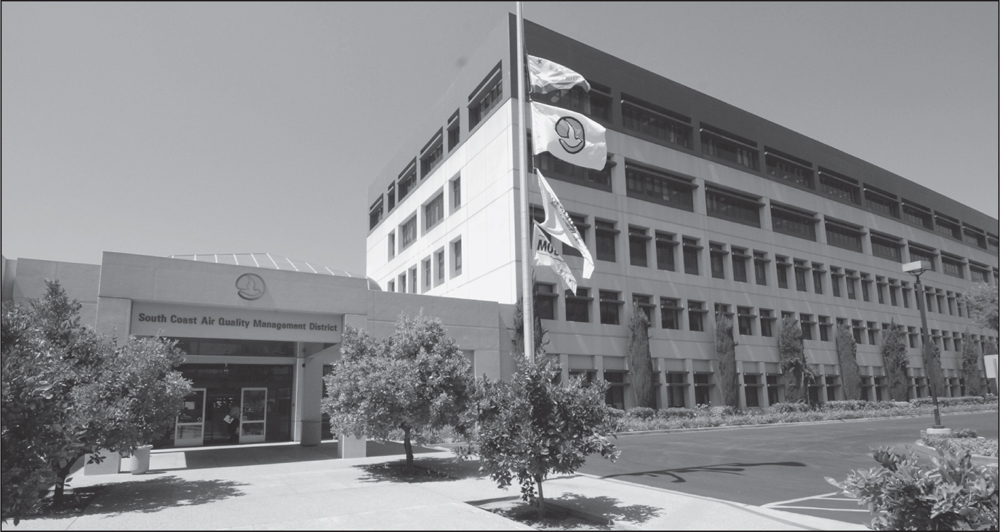
When the South Coast Air Quality Management District relocated to its new headquarters within the Gateway Corporate Center in October 1991, it became the largest employer in Diamond Bar and has since kept that title with an average of 720 employees. The facility is approximately 350,000 square feet and includes a two-story laboratory building, two office buildings (three and five stories high), and a 450-seat auditorium. When the AQMD board unveiled plans for new headquarters in December 1988, it was said to feature “futuristic” energy provisions such as solar energy and fuel cells. In August 2004, the AQMD headquarters made news when it unveiled one of its first hydrogen fueling stations for public use.
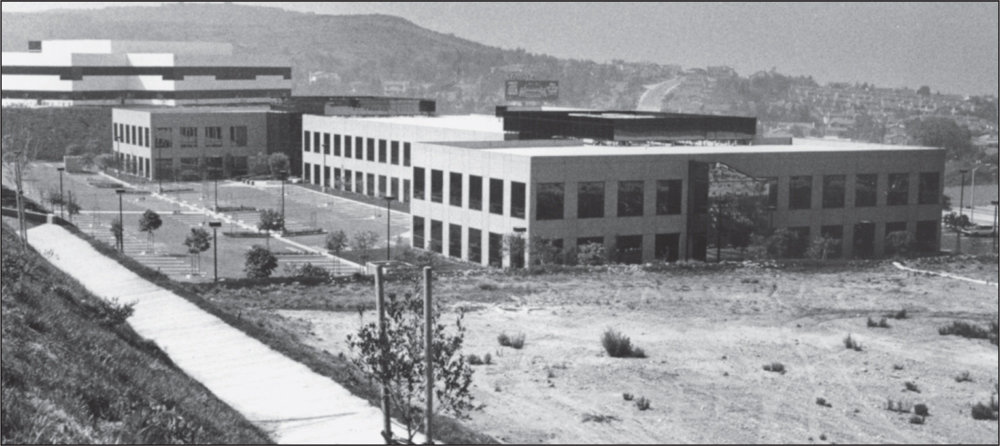
Situated on 255 acres of hillside land with panoramic views of the San Gabriel Valley, the Gateway Corporate Center is one of the largest corporate office parks in East San Gabriel Valley. The business park, designed for corporate headquarters, is conveniently located at the intersection of the Pomona (Route 60) and Orange (Route 57) Freeways. More than two-thirds of the land is dedicated as permanent space, with the remaining land divided into 23 lots comprising 77 buildable acres. The first company in the office park was Kelley-Clarke, Inc., which arrived in 1987. Kelley-Clarke has since relocated, but the office park continues to attract nationally known and Fortune 500 companies. In 2014, a Kaiser medical facility expansion project to build a two-story addition to an already existing building signaled development of the last vacant parcel of land within the Gateway Corporate Center.
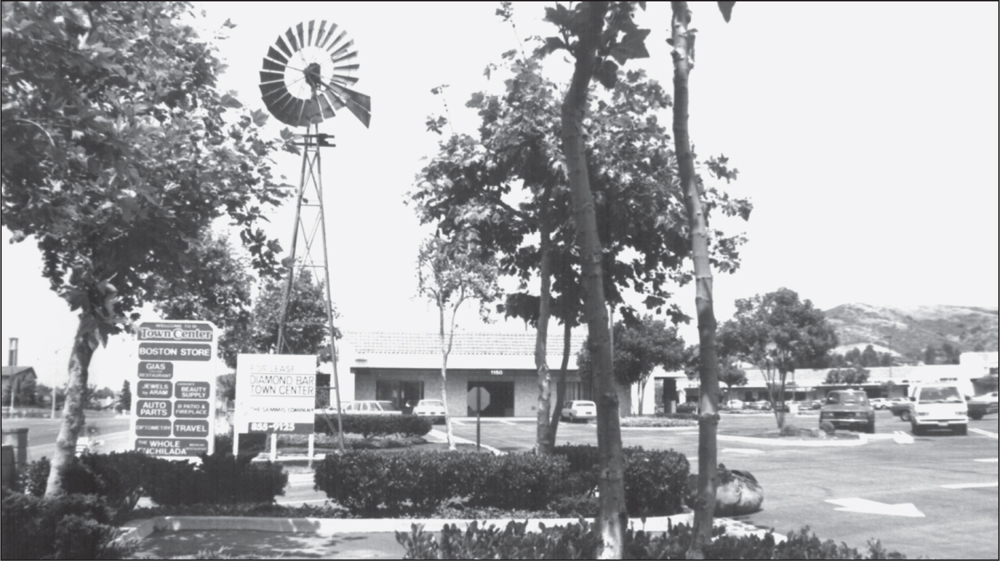
The Diamond Bar Town Center contains a 30-foot-tall windmill that serves as a reminder of the area’s past. The windmill (pictured above in the early 1980s) is said to have been operational during the Diamond Bar Ranch days at a location approximately 200 yards away from where it now stands. Supposedly, the windmill survived the demolition of all things ranch-related during development of the area in the early 1970s because Don Ury, then vice president of the Diamond Bar Development Company, moved the windmill to ensure that it escaped unscathed. Once the shopping center was completed, the windmill was brought back and welded in place near the corner of Diamond Bar Boulevard and Grand Avenue. In 2005, the Diamond Bar Breakfast Lions led an effort to recognize the windmill as a historical landmark. Among those pictured below at a 2005 event to recognize the windmill’s historical importance are councilman and member of the Diamond Bar Lions Club Jack Tanaka, Diamond Bar Historical Society president John Forbing, councilwoman Carol Herrera, Lions Club member Wanda Tanaka, and Bill Bartholomae (son of former Diamond Bar Ranch owner William Bartholomae).

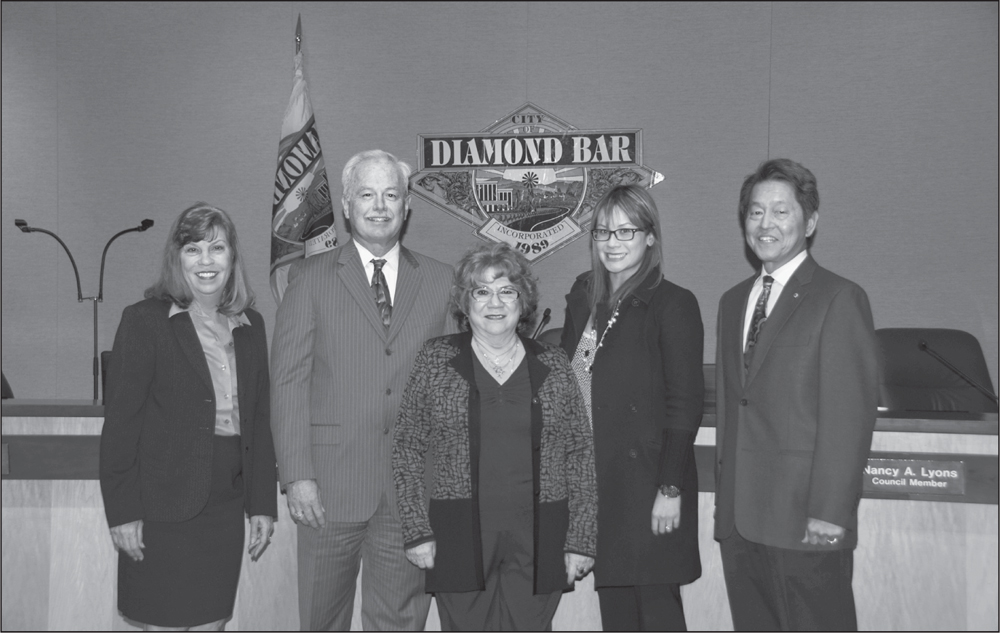
Since the city’s incorporation in 1989, Diamond Bar has operated as a general law city under an elected city council–appointed city manager form of government. Among other things, the city council is responsible for establishing local laws, setting policy, adopting an annual budget, and appointing community members to serve on the city’s three advisory commissions—parks and recreation, planning, and traffic and transportation. Council members are elected every four years, with elections held every November in odd years. Each December, the council elects from its membership a mayor to serve as the presiding officer for a one-year term. Members of the 2014 Diamond Bar City Council are pictured here; they are, from left to right, councilwoman Nancy A. Lyons, mayor pro tem Steve Tye, mayor Carol Herrera, and council members Ling-Ling Chang and Jack Tanaka. Page six of this book contains a complete list of all members of the Diamond Bar City Council and their years of service.
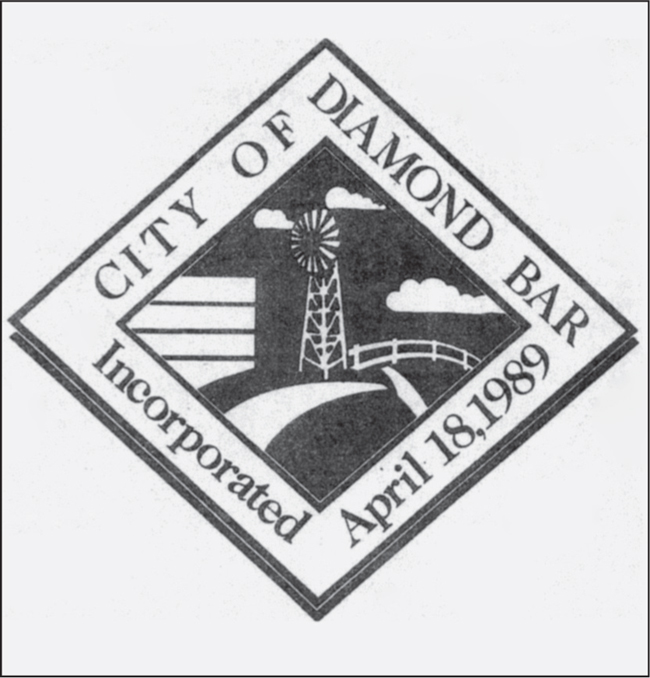
The official city seal was adopted by the Diamond Bar City Council in October 1989. The seal was designed by Jackson T. Wyse, a graphic artist and Diamond Bar High School graduate, with finish work done by architect David Eskridge. The seal’s main elements pay homage to the city’s working cattle ranch days, when windmills were used to pump water and Frederick E. Lewis’s registered ranch brand was a diamond with a bar above it. The hills are characteristic of the city’s landscape, the trees are symbolic of the environmental awareness of the community, and the building represents the first city hall. The image at right shows Wyse’s initial concept, and the finished seal is visible behind the city council members in the above photograph.















